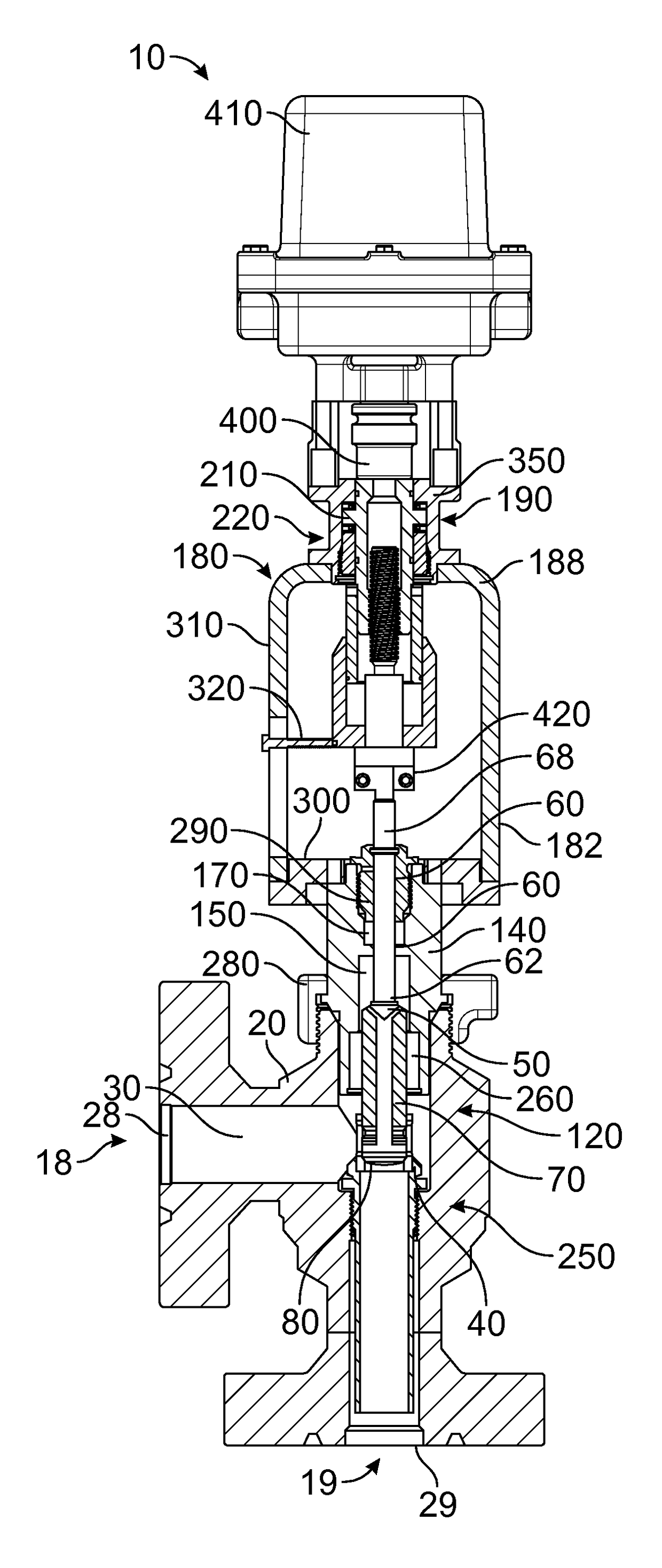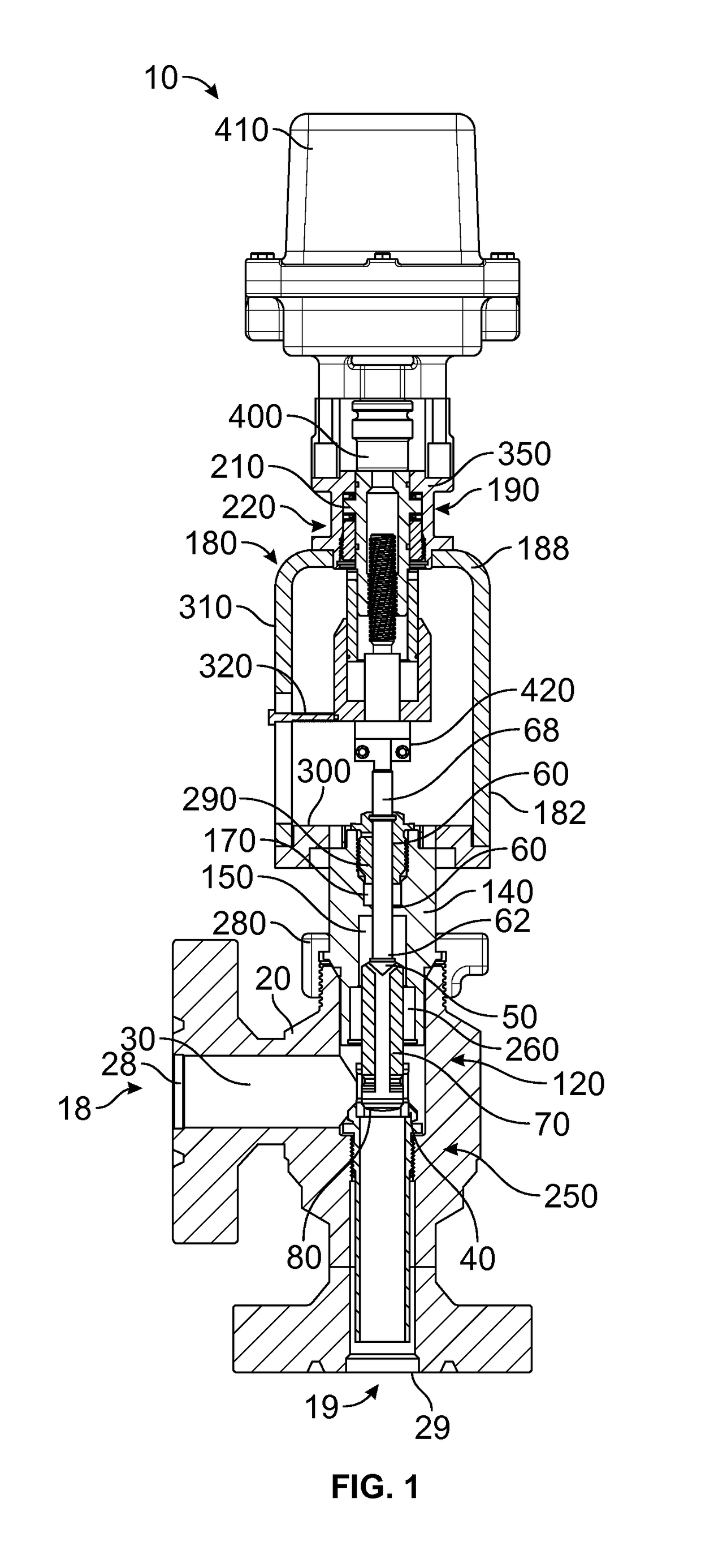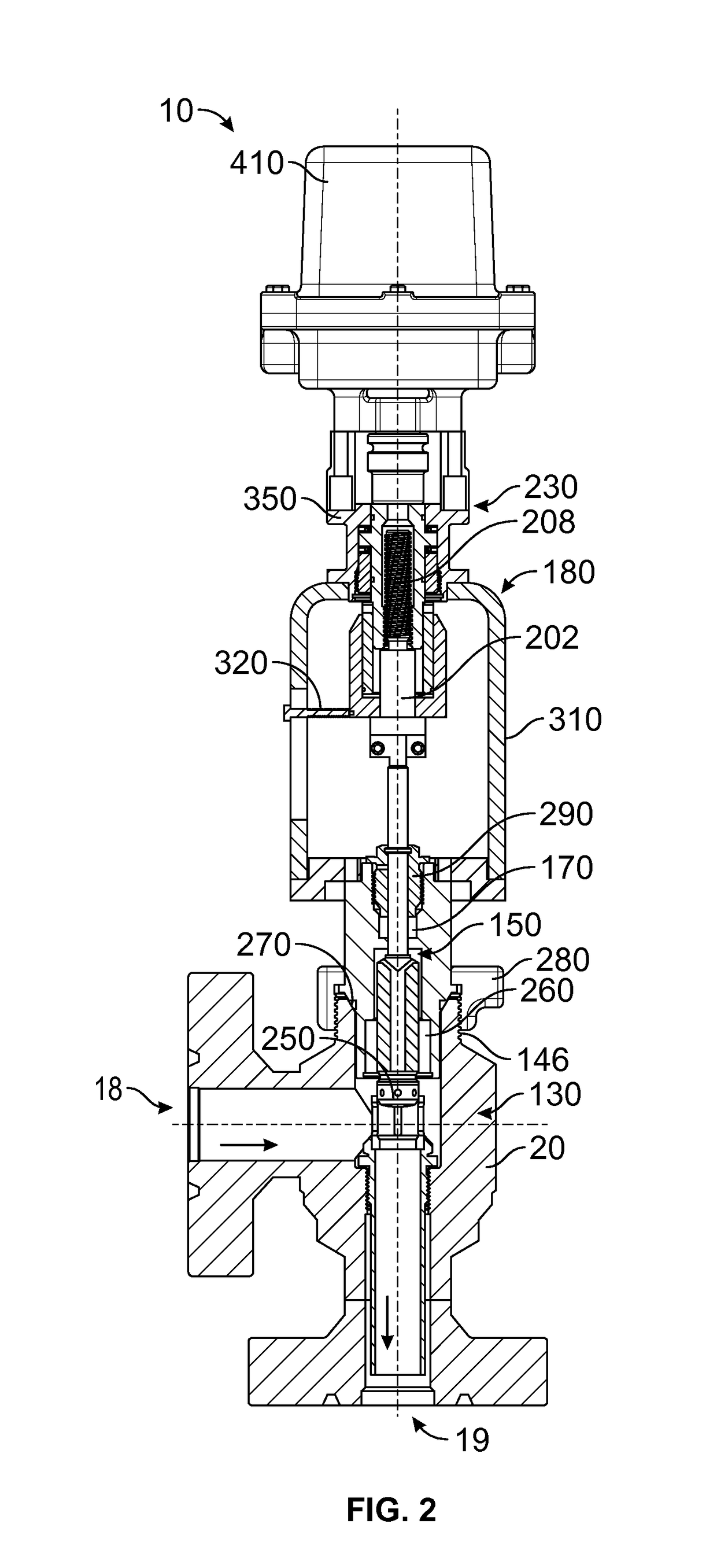Prior art choke valves, such as that taught in U.S. Pat. No. 5,706,856 to Lancaster on Jan. 13, 1998 and other prior art devices, particularly on fluid lines having 15,000 psi or greater, often have a relatively
high torque requirement to open and close such valves, resulting in more
energy demand and
power consumption for remote, relatively large motorized actuators such as those found on motorized actuated chokes.
This is due primarily to lack of
pressure balance between both sides of the choke and a relatively high seal friction (see FIG. 6 of Lancaster).
Such choke valves for use in product wells or oil and
gasoline facilities result in higher operating costs.
However, prior art valves, particularly on fluid lines having 15,000 psi or greater, often have a relatively
high torque requirement to open and close such choke valves, resulting in more
energy demand for remote, motorized actuators.
Such actuators typically have a high power requirement and cannot be easily set-up at remote locations far from utilities.
Further, prior art choke valves typically have multiple rubber seals (see FIG. 3 of Lancaster) that are susceptible to damage in oil producing and fracking operations due to high concentrations of CO2, H2S, and sand in many of the fluid flows resulting from such operations.
Moreover, such prior art valves have a relatively large number of seals contained in seal-cartridges that are difficult to remove from the bonnet due to the corrosive
impact of
sour gas and carbonic production fluids produced in oil and gas operations.
Of the entire bonnet must be replaced when servicing such valves, which is a costly repair.
Further, such prior art choke valves have seals that have little sealing value, but must still be maintained and serviced, which further increases seal friction and operating torque.
Such prior art indicator drive assemblies include a fabricated sleeve held in place with plastic buttons and pins that slide through the non-machined
rough surface of the yoke, resulting often in misread indicator readings.
Field service and replacement of such indicators is difficult since the indicator mechanism is a part of the fixed connection of both the lower and upper stems and the
assembly guide, and since it is locked by two large tapered nuts located at the upper and lower end of the tubing.
Such prior art devices provide no means of overload protection from higher
motor drive torque due to use of fixed joints between the upper and lower stems (see FIGS. 1 and 5 of Lancaster).
Often such high torque requirement to open the
choke valve increases the
actuator motor's current capacity, thus damaging or
burning out the motor, and causes thread damage upper and lower stems including the
drive shaft assembly and
coupling, which results a relatively high cost of repair and significant down time.
These three parts and the lower stem reduce volume within the
body cavity and result in greater fluid turbulence,
wear and tear within the body and the internal parts, which further increases required torque to move the valve as well as additional
wear and tear on the internal components of such devices.
Further, such valves often result in the choke seat getting stuck into the chock
body cavity due to corrosive activity at the seating area.
As such a
valve seat utilizes an
elastomer rubber seal, often such seal is worn prematurely and are destroyed internally.
As such, prior art valves of this type are often costly to service in the field and expensive to manufacture and assemble in the first place.
Lancaster and other prior art devices have further drawback that a single tubing structure holds the bonnet and upper hardware assembly, the indicator drive assembly and the upper and lower stems with a fixed
coupling (see Lancaster FIGS. 1 and 5).
Such a one-piece design makes assembly, disassembly, and servicing complicated due to the difficulty of aligning the
drive shaft, upper stem and lower stems.
Further, such a device results in the need for additional bearings and results in greater rotational friction.
Large tapered nuts at both ends of such tubing assembly are difficult to assemble, disassemble and service.
Moreover, the
manual override assembly of the prior art devices requires a complicated
handle and drive assembly to facilitate
manual override of the valve (refer to Lancaster FIG. 4).
 Login to View More
Login to View More  Login to View More
Login to View More 


